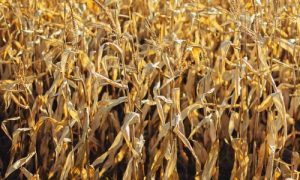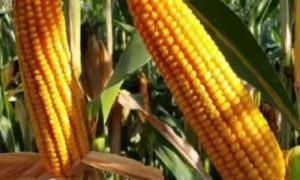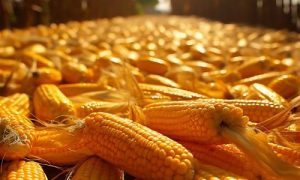Fall armyworm threatens maize crop in parts of Himachal

Fall armyworm (FAW) infestation has hit maize crops across Himachal Pradesh’s North Zone, affecting up to 15% of fields in districts like Una, Hamirpur, Kangra, Chamba, and Mandi. Officials advise natural controls for low infestation and chemicals for severe cases. Vigilant field monitoring and preventive farming practices are being promoted.
Infestation of the fall armyworm (FAW), a destructive pest, has been reported in several parts of Himachal Pradesh, posing a serious threat to maize crops and causing concern among farmers across multiple districts.
According to agriculture department officials, a significant and widespread FAW infestation has been reported from several parts of North Zone – which comprises Kangra, Hamirpur, Mandi, Una and Chamba districts. In the north zone, maize has been sowed on approximately 1.70 lakh hectares.
Till July 22, the FAW infestation in Una was reported at around 15%, it was 10-12% in Hamirpur, 12% in lower parts of Kangra, 10% in Chamba and 8-10% in some pockets of Mandi district.
Fall armyworm (FAW), scientifically known as spodoptera frugiperda, is a highly destructive insect pest that can significantly damage maize crops. FAW larvae feed on maize leaves, tassels, and ears, causing substantial yield losses. It bores into plant tissue, hollowing out the stems and causing irreversible damage. FAW was first detected in India in the state of Karnataka in 2018 and later the scientists in Himachal reported it in 2019.
The outbreak prompted the agriculture minister Chander Kumar to chair a high-level meeting on Tuesday, which was attended by the Additional Director of Agriculture (North Zone) Dr Rahul Katoch, Vice-Chancellor, CSK Himachal Pradesh Krishi Vishvavidyalaya (CSKHPKV) Palampur, Dr Naveen Kumar, representative officers from ATMA and JICA projects and senior agricultural scientists.
During the meeting, the Agriculture Minister emphasised the need to promote natural farming-based preventive measures, particularly in the early stages of crop growth, to reduce dependency on chemical control. Departmental authorities further stressed the importance of rigorous and sustained field-level monitoring to ensure timely detection and response. He also directed scientists from the agriculture university to collaborate with institutions in neighbouring states, such as PAU Ludhiana, to exchange knowledge and ideas for effectively addressing such situations.
Additional Director of Agriculture (North Zone), Dr Rahul Katoch, said, “Farmers need to regularly monitor their fields, and if the pest infestation is less than 10%, there is no need for chemical sprays. In such cases, neem extracts or formulations used in natural farming can be applied. Bio-pesticides can also be effective. However, if the infestation exceeds 10%, chemical sprays like Chlorantraniliprole or Emamectin Benzoate (4 ml per 10 litres of water) should be used.”
“For the next sowing season, farmers are advised to carry out deep ploughing and expose the soil to direct sunlight for some time. They should also follow good agricultural practices such as field sanitation, weed control, and use of barrier crops like cowpea or Napier grass. Intercropping with pulses is also recommended,” he said.
Officials said that dedicated teams comprising Subject Matter Specialists (SMS), Agriculture Development Officers (ADO), and Agriculture Extension Officers (AEO) have been deployed and are actively conducting field surveillance across villages. Additionally, teams from bio-control laboratories and CSKHPKV scientists are engaged in targeted monitoring of severely affected pockets.
Source : Hindustan Times
To Read more about Maize News continue reading Agriinsite.com
















